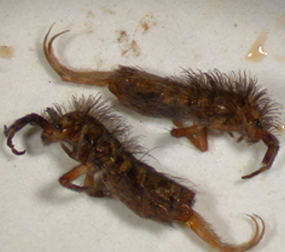
Phil Pellitteri, UW Insect Diagnostic Lab
Revised: 1/6/2005
Item number: XHT1039
Springtails are very common, small (1 to 3 mm long), wingless insects that jump or hop using a furcula, a forked structure on the underside of the abdomen that acts like a spring. Most springtails live in rich soils and leaf litter, or in decaying wood, where they feed on organic matter, fungi, or algae. Dark bodied springtails found in late winter are referred to as “snow fleas”. Springtails are harmless, nuisance insects.
Springtails can build up in large numbers and are often seen after soil has been disturbed. They can congregate around house foundations or sidewalks where they can be a temporary annoyance. Springtails also can occur around floor drains, and in damp basements, and crawl spaces. High populations of springtails are temporary and disappear by themselves.
Control: Springtails do not survive the dry conditions found indoors. Therefore, any steps to improve ventilation and promote drying are the best long term solutions to managing this insect. Outdoors, removal of wet leaves, bark mulch or other organic matter will eliminate breeding sites. Landscape and household insecticides or insecticidal soap sprays can be used to treat infestations, but will provide only temporary relief if the favorable breeding sites and conditions for survival are not eliminated. If springtails are migrating indoors check door sweeps, vents and foundation openings and make changes (e.g., replacing worn door sweeps, or caulking holes) that will keep the insects out. When masses of springtails occur, they can be swept or vacuumed up and discarded.
Houseplants with organic matter in the soil can become infested with springtails. Springtails will not harm houseplants, and allowing the soil to dry out will usually eliminate these insects. If needed, plants can be taken outdoors and the soil can be treated with garden insecticides.
For more information: contact your county Extension agent.
Download Article





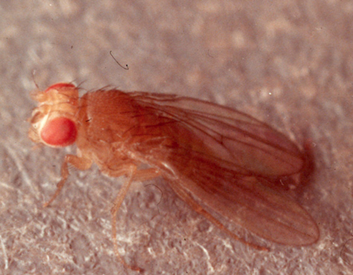 Fruit Flies in the Home
Fruit Flies in the Home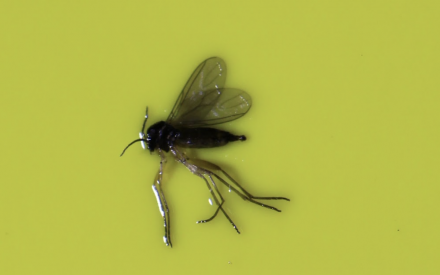 Fungus Gnats and Shore Flies in Greenhouses
Fungus Gnats and Shore Flies in Greenhouses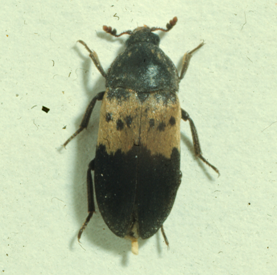 Larder Beetles
Larder Beetles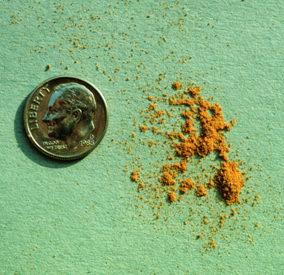 Powder Post Beetles
Powder Post Beetles


